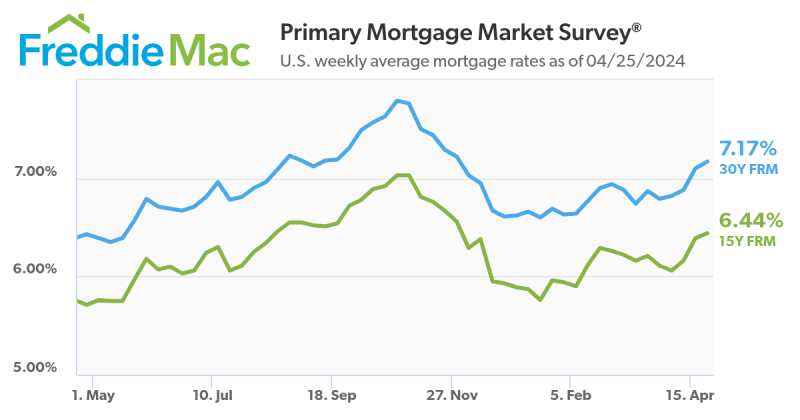Advertisement
Old habits die hard
E-Mail marketing realities for financial marketersRay ParenteauE-Mail Marketing, Gramm-Leach-Bliley Act, CAN-SPAM Act, ClickRSVP
"Is e-mail marketing a good thing?"
If you gathered representatives from 10 different lenders in a
room and asked them this question, eight of them would agree with
the statement. But if you followed up with, "What is your company
doing with e-mail?" I expect you'd be met with thundering
silence.
E-mail marketing makes many lenders uncomfortable. Though a
large number believe they should be using e-mail as a marketing
tool, only a few are actually doing it. We estimate that fewer than
10 percent of lenders and financial institutions are using e-mail
marketing at all. In a recent report by Marketing Sherpa, 680
e-mail marketing campaigns were sampled, and only 22 (three
percent) were financial institutions.
I find this astounding because just about everyone has some sort
of relationship with a financial institution. More significant is
that these are important relationships involving all aspects of
moneya product that has all kinds of uses and is especially
time-sensitive. When you consider the immediacy and personal nature
of e-mail, it's amazing that more financial institutions don't use
it for marketing.
In all fairness, it hasn't been easy for lenders. First came the
Gramm-Leach-Bliley
Act. Then the avalanche of spam began, much of it containing
dubious offers for mortgages and credit. This was met with growing
frustration that led to the CAN-SPAM Act
of 2003, along with a host of industry initiatives to stem the
tide of "junk" e-mail. Now, the rising concern over "phishing" and
e-mail-related fraud has taken the spotlight.
Nevertheless, things are changing. A new "Sender ID" standard is
being widely adopted and will reduce e-mail forgery. The e-mail
marketing industry is becoming more "professionalized," and
consumers are smarter about using e-mail. In short, e-mail
marketing is poised to become a serious tool for lenders and
financial institutions. Here is a reality check on what's needed to
make it work for you.
It's Easier Than You Think
As a legitimate marketer, you can effectively use e-mail and comply
with CAN-SPAM as long as you have an active relationship with the
recipient. Your customer or an active prospect could qualify as
such. However, the basic rule is that you cannot contact anyone who
has opted out of receiving your messages. Period. For non-customers
(prospects), the rule is more stringent, and you must have an
explicit "opt-in" from your prospect in advance. Therefore, if you
have e-mail addresses for your customers, you can send them
promotional e-mails provided that you follow these five basic
rules:
*The recipient has not opted out;
*Your message contains a working opt-out mechanism that you must
process within 10 days;
*You include your physical address in the e-mail;
*Your message is clearly promotional in nature; and
*No part of your message (subject, sender, etc.) can be
deceptive.
The significance here is that you can e-mail your customers and
enjoy the benefits of cross-selling and up-selling. It's called
"relationship marketing," and it works. Yes, you will get a few
opt-outs, which typically total less than 0.5 percent, but the
upside is compelling. All you need to do is follow the
aforementioned rules.
It's Harder Than You Can Imagine
Given today's e-mail climate, managing a professional e-mail
marketing program requires expertise and systems that most lenders
do not currently have. Marketing Sherpa estimates that it costs
upwards of $150,000 per year to sustain a professional e-mail
marketing program in-house. The reality here is that, unless you
have the internal resources to commit, it's best to outsource to a
professional service.
Besides the technical issues involved in preparing and
delivering professional e-mail, there are numerous obstacles to
having your message received. While delivery rates have always been
hampered by frequent address changes (upwards of 30 percent per
year), today's e-mail marketer must run the gauntlet of being
"white listed by Internet Service Providers (ISPs) like AOL and
Yahoo, spam-proofing copy, managing bounce-backs and processing
opt-outs. If you don't comply with these industry standards,
chances are that 30 percent or more of your e-mail campaigns won't
even reach your target.
The good news is if you establish and maintain an e-mail
relationship with your customers and prospects, your deliverability
and effectiveness will significantly improve. Because we practice
"relationship marketing," our financial clients experience bounce
rates of less than 10 percent and opt-out rates of less than
one-quarter percent.
Keeping a Clean List is Job One
It used to be that measuring click-through responses and messages
viewed were the key measures of an e-mail campaign. Today, it's
about "deliverability," how much of your e-mail gets through. The
most critical component for improving deliverability is list
hygiene. For instance, if your campaign includes AOL customers and
your rate of bad AOL addresses exceeds 10 percent, the rest of your
campaign may be dumped. Likewise, if too many AOL customers use the
"Report Spam" option on your message, you'll become blacklisted.
Consider that AOL accounts for approximately 40 percent of consumer
e-mail addresses, and then you can see the problem. And AOL is not
the only one. More major ISPs (Yahoo, Hotmail, Earthlink) are
implementing spam-blocking procedures that are directly based on
the quality of the list and reputation of the sender.
Again, the solution boils down to maintaining that relationship
with your e-mail list, which partly involves quality of content but
mostly concerns the basics: removing "dead" addresses, honoring
opt-out requests promptly, and maintaining a current, centralized
"do not e-mail" file to purge against future campaigns.
Response is Not Always the Objective
E-mail marketing is not direct-mail marketing. While the goal of
direct-mail marketing is always response rate, that's not the whole
story for e-mail marketing. In the new reality of e-mail marketing,
the main objective should be "address retention," keeping an
address current and active. Your goal is frequent e-mails to your
customers and prospects. If you don't e-mail often enoughat least
four times a yearyour deliverability could deteriorate to the point
of becoming blacklisted.
E-mail campaigns that are designed simply to stay in touch,
without being annoying, can be very effective. So, make it a point
to send some e-mails that aren't asking for an order. You goal is
to build a good working relationship, which means not always being
in selling mode. For instance, we offer a service (HomeValueBot)
that allows lenders to provide their contacts with a free home
value update on a quarterly basis. There is no hard sale pitch
involved, but there is a relevant value to the recipient that
builds a relationship. For example, one of our large credit union
clients used this tactic and achieved a 27 percent response rate,
directly generating more than $2.5 million in new equity lines in
just six weeks.
Relationship Marketing Works
Non-promotional e-mails achieve success on three levels: they keep
you in touch, keep your e-mail list clean, and generate some direct
business. Regular e-mail contacts should be part of an overall mix
that converts and retains customers.
One of our clients (a $10 billion regional bank) decided to
stage a customer appreciation day. They used e-mail to invite some
80,000 customers. More than 1,100 customers responded on the Web
site and helped make the celebration a success. The e-mail cost was
about $5,000, which is a fraction of what direct-mail would have
cost. The reward was priceless. Another community bank client sends
out regular e-mail reminders about CD rates and branch openings,
with no response required. Although this is not an "opt-in" list,
the opt-out rate is less than one-tenth of one percent. That tells
me that customers don't mind hearing from their bank once in a
while.
Which brings us to another benefit of regular customer e-mails:
customers know what your e-mails look like. It helps battle the
recent explosion of e-mail scams and "phishing" attacks that
customers have received from scam artists posing as financial
institutions. If a legitimate financial institution stays in
regular touch with their customers by e-mail, their customers know
what their e-mails look like. It helps them screen out the scam
artists.
The bottom line is this: Don't let the complexities of e-mail
keep you from staying in touch with your customers. With the right
resources and systems in place, it can be an effective way to
cross-sell and solidify your relationships with your customer. So,
what are you waiting for?
Ray Parenteau is president of Hopedale, Mass.-based ClickRSVP, a provider of
e-marketing services to financial institutions and lenders
nationwide. He may be reached at (508) 478-0440 or e-mail [email protected].
About the author





